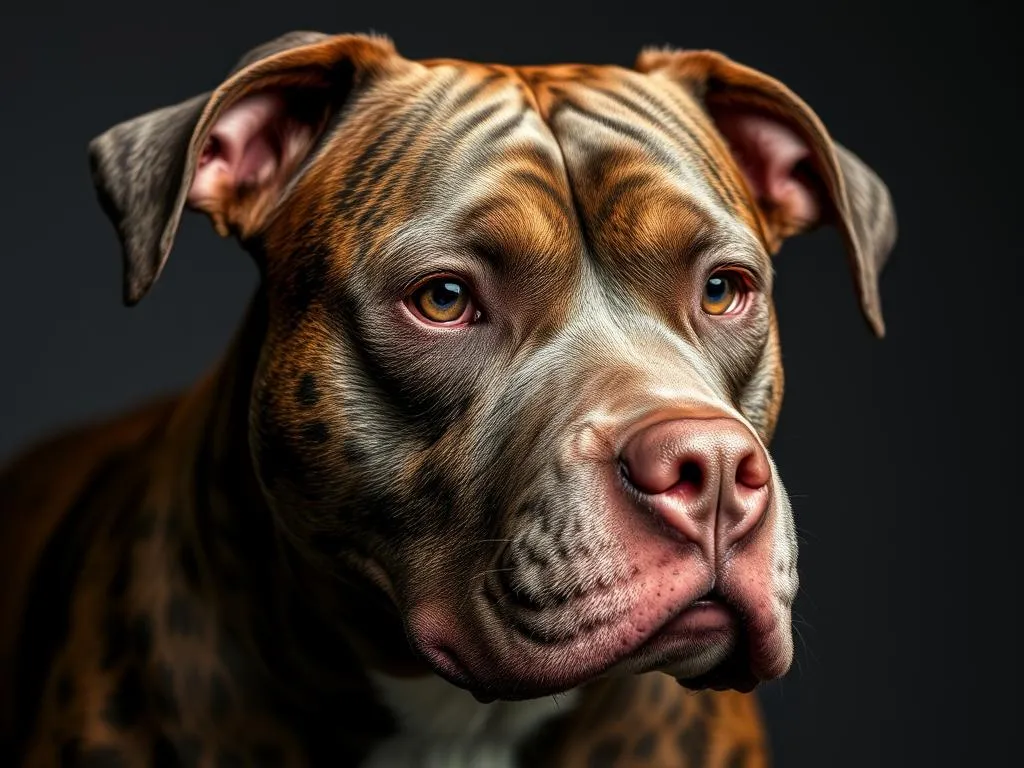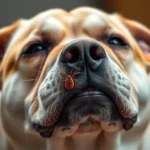
Pitbulls are known for their muscular build and affectionate nature, but many owners may not realize that this breed is also susceptible to various skin issues. The skin is the largest organ of a dog, playing a crucial role in protection, temperature regulation, and sensory perception. As Pitbulls have unique skin characteristics, understanding common Pitbull skin issues is vital for every owner. In this post, we will explore the anatomy of Pitbull skin, identify prevalent skin problems, provide insights into diagnosing and treating these issues, and discuss preventive care.
Understanding the Skin of a Pitbull
Anatomy of Pitbull Skin
Pitbulls have a relatively thin skin layer compared to other dog breeds. The structure of their skin consists of three main layers: the epidermis, dermis, and subcutaneous tissue. The epidermis is the outer layer that provides a barrier against environmental factors, while the dermis contains blood vessels, hair follicles, and connective tissue. The subcutaneous layer consists of fat and connective tissue that helps insulate the body and provides cushioning.
The skin barrier is incredibly important, as it protects against pathogens, allergens, and irritants. When this barrier is compromised, it can lead to a myriad of skin issues, which can be particularly problematic for Pitbulls due to their inherent sensitivities.
Unique Characteristics of Pitbull Skin
Pitbull skin is notably thinner and more delicate than many other breeds. This thinness makes them more susceptible to irritation and injury. Additionally, the breed often has a short coat with less undercoat, which can expose their skin to environmental factors such as allergens, temperature fluctuations, and irritants. Consequently, Pitbull owners must be vigilant regarding their pet’s skin health.
Common Pitbull Skin Issues
Allergies
One of the most common Pitbull skin issues is allergies. Allergies can be categorized into three main types:
- Food allergies: These occur when a dog reacts to certain proteins or ingredients in their diet. Common allergens include beef, chicken, dairy, and grains.
- Environmental allergies: These result from exposure to pollen, dust mites, mold, and other environmental factors. Seasonal allergies are particularly prevalent during certain times of the year.
- Contact allergies: These arise from direct contact with irritants such as certain fabrics, cleaning products, or insect bites.
Symptoms of allergies in Pitbulls often include persistent itching, redness, rashes, and sometimes, even gastrointestinal issues. Identifying the source of the allergy can be tricky, so keeping a detailed journal of your dog’s activities and diet can help pinpoint potential triggers.
Dermatitis
Dermatitis refers to inflammation of the skin and can manifest in various forms, primarily:
- Allergic dermatitis: This type arises from allergies, leading to red, inflamed skin, excessive scratching, or licking.
- Contact dermatitis: Resulting from direct contact with irritants, this often leads to localized redness and irritation.
Causes of dermatitis can range from allergens to irritants like soaps, shampoos, or even certain types of grass. Symptoms include redness, swelling, and sometimes, secondary infections due to excessive scratching.
Hot Spots
Hot spots, or acute moist dermatitis, are localized areas of inflamed, infected skin. They can develop rapidly, often triggered by factors such as:
- Allergies
- Insect bites
- Moisture trapped in the fur
- Excessive scratching or licking
Symptoms include red, painful patches that may ooze or crust over. Treatment typically involves shaving the area, cleaning it, and applying topical medications. In some cases, a veterinarian may prescribe antibiotics or steroids to reduce inflammation and infection risk.
Skin Infections
Bacterial and fungal infections are other prevalent Pitbull skin issues. Bacterial infections often occur when the skin barrier is compromised, while fungal infections, like ringworm, can be transmitted from other animals or environments.
Signs and symptoms of skin infections may include:
- Redness and swelling
- Pus or discharge
- Foul odor
- Hair loss in affected areas
Prompt treatment from a veterinarian is essential, as untreated infections can lead to more severe health problems.
Parasites
External parasites can also cause skin issues in Pitbulls. Common parasites include:
- Fleas: These blood-sucking insects can lead to significant itching, irritation, and allergic reactions.
- Ticks: Ticks can transmit diseases like Lyme disease and cause localized swelling.
- Mites: Mite infestations, such as mange, can lead to intense itching and hair loss.
Symptoms of parasitic infestations include scratching, biting at the skin, and visible parasites in the coat. Preventative measures include regular grooming, flea and tick medications, and maintaining a clean living environment.
Diagnosing Skin Problems
When to Consult a Vet
Identifying skin issues early is crucial for effective treatment. Signs that warrant a visit to the veterinarian include:
- Persistent itching or discomfort
- Red, inflamed, or swollen areas
- Unusual odor from the skin
- Hair loss or skin lesions
- Changes in behavior, such as increased irritability or lethargy
Early diagnosis can prevent complications and lead to better outcomes for your pet.
Diagnostic Techniques
Veterinarians utilize various diagnostic techniques to identify skin problems. Common methods include:
- Skin scrapings: A small sample of skin is taken to check for parasites or infections.
- Allergy tests: These can help determine specific allergens affecting your pet.
- Blood tests: Used to assess overall health and check for underlying conditions that may contribute to skin issues.
During a veterinary examination, expect a thorough assessment of your dog’s skin, coat, and overall health. The vet may also ask detailed questions about your pet’s diet, lifestyle, and any recent changes in their environment.
Treatment Options
Medications
When it comes to treating common Pitbull skin issues, medications may be necessary. Some of the commonly prescribed medications include:
- Antihistamines: These can help alleviate allergy symptoms by blocking histamine receptors.
- Steroids: Corticosteroids can reduce inflammation and itching but may have side effects with long-term use.
- Antibiotics: Prescribed for bacterial infections, these medications can help clear up infections effectively.
While medications can be effective, they often come with pros and cons. It’s crucial to discuss these options with your veterinarian to determine the best course of action for your Pitbull.
Topical Treatments
Topical treatments can also be beneficial for various Pitbull skin issues. These may include:
- Shampoos: Medicated shampoos can help soothe irritated skin and remove allergens.
- Creams and ointments: These can provide localized relief for rashes or infections.
Using topical treatments should be guided by a veterinarian, especially for persistent skin conditions.
Home Remedies
For minor skin issues, some safe home remedies can provide relief. Options may include:
- Oatmeal baths: These can soothe irritated skin and reduce itching.
- Coconut oil: Known for its moisturizing properties, coconut oil can help hydrate dry skin.
- Aloe vera: This natural remedy can soothe burns and irritated skin.
While home remedies can be effective, it’s important to exercise caution. Always consult with a veterinarian before trying any new treatment, especially if the condition worsens.
Preventive Care
Regular Skin Checks
Routine skin examinations are essential for maintaining your Pitbull’s skin health. Owners should take time to inspect their dog’s skin and coat regularly. Look for:
- Redness or inflammation
- Unusual lumps or bumps
- Hair loss or thinning
- Signs of parasites
By keeping an eye on your dog’s skin, you can catch potential issues early and seek veterinary advice promptly.
Proper Nutrition
A well-balanced diet plays a significant role in skin health. Ensure your Pitbull’s diet includes high-quality protein and essential nutrients.
- Omega fatty acids: These are particularly important for maintaining healthy skin and coat. Supplements can help if your dog’s diet lacks these essential fatty acids.
- Vitamins: Vitamins A, E, and certain B vitamins contribute to skin health and immune function.
Discuss dietary options with your veterinarian to ensure your Pitbull is receiving the nutrients they need for optimal skin health.
Environmental Management
Managing your dog’s environment can significantly reduce exposure to allergens. Consider the following tips:
- Regular cleaning: Keep your home free of dust and allergens by vacuuming frequently and washing your dog’s bedding.
- Grooming: Regular grooming helps remove loose hair and dander, reducing the risk of skin issues.
- Limit outdoor exposure: During high pollen seasons, consider keeping your dog indoors during peak hours.
Creating a clean and safe environment can help minimize the risk of skin issues in your Pitbull.
Myths and Misconceptions
Common Misunderstandings about Pitbull Skin
Several myths surround Pitbull skin issues, leading to confusion among owners. Some common misconceptions include:
- All Pitbulls have skin problems: While this breed is prone to certain skin issues, not every Pitbull will experience them. Genetics, environment, and care all play a role.
- Home remedies are always safe: While some home remedies can be effective, others may cause irritation or worsen a condition. Always consult a vet before trying new treatments.
- Skin issues are just cosmetic: Skin problems can lead to severe health complications if left untreated. It’s essential to take any skin issue seriously.
Understanding these misconceptions can help owners better care for their Pitbulls and seek appropriate treatment when necessary.
Conclusion
Maintaining skin health in Pitbulls is essential for their overall well-being. Being aware of common Pitbull skin issues, their causes, and effective treatments empowers owners to take proactive steps in caring for their pets. Regular veterinary check-ups, proper nutrition, and vigilant skin examinations can help prevent many skin conditions. With a little effort and attention, you can ensure your Pitbull remains healthy, happy, and free from skin problems, allowing you to enjoy the companionship of this wonderful breed for years to come.









